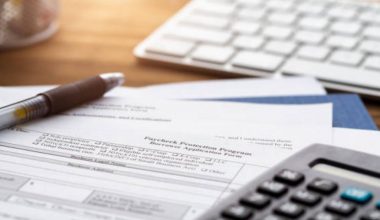Predicting your cash position should be a key concern for every business since it allows you to keep track of your cash flow, plan for the future, and make better decisions. At its most basic level, a cash flow prediction can tell you whether you’ll have positive cash flow (more money coming in than going out) or negative cash flow (more money going out than coming in) at any particular moment in time. Having known that let’s consider cash flow forecast examples, benefits, how to make a cash flow forecast and all you need to know.
Cash flow
The cash flow statement, also known as the statement of cash flows, is a financial statement that summarizes the amount of cash and cash equivalents that enter and leave a business.
The cash flow statement (CFS) is a financial statement that shows how successfully a firm manages its cash position, or how well it generates cash to pay debts and support operating expenses. Since 1987, the cash flow statement has been a required feature of a company’s financial filings in addition to the balance sheet and income statement.
The quantity of money that comes in and goes out of a business is referred to as cash flow. Businesses generate revenue from sales and spend money on expenses.
They may also earn money via interest, investments, royalties, and licensing agreements, as well as selling things on credit with the expectation of receiving the money owing later.
Overview
The quantity of money that comes in and goes out of a business is referred to as cash flow. Businesses generate revenue from sales and spend money on expenses. They may also earn money via interest, investments, royalties, and licensing agreements, as well as selling things on credit with the expectation of receiving the money owing later.
One of the most essential objectives of financial reporting is to assess the amounts, timing, and uncertainty of cash flows, as well as where they originate and where they go. It is necessary for evaluating a company’s liquidity, flexibility, and overall financial success.
Positive cash flow implies that a company’s liquid assets are growing, allowing it to meet obligations, reinvest in its business, return money to shareholders, pay bills, and offer a cushion against potential financial difficulties. Profitable investments can be taken advantage of by companies with high financial flexibility. They also do better during economic downturns because they avoid the consequences of financial distress.
The cash flow statement, a basic financial statement that reflects on a company’s sources and uses of cash over a specific time period, examine cash flows. It can be used by corporate management, analysts. Also, investors assess how well a firm can generate cash to pay its debts and manage its operating expenses. Along with the balance sheet and income statement, the cash flow statement is one of the most essential financial statements by a firm.
What Is a Cash Flow Forecast
The process of estimating the flow of cash in and out of a business over a set period of time is known as cash flow forecasting. An effective cash flow prediction allows businesses to foresee future financial positions, avoid debilitating cash shortages, and maximize profits on any cash surpluses they may have.
You may reduce the cash buffer required for unplanned expenses and make better use of your company’s spare cash with an accurate cash flow forecast. You can also plan ahead for any anticipated cash deficits and better control FX risk. Furthermore, an accurate and timely forecast can assist raise the forecaster’s profile and reputation among key business stakeholders.
Companies, on the other hand, frequently struggle to precisely anticipate their cash flows. Especially if they operate in multiple countries and currencies. To create an accurate cash flow projection. The forecaster will need to gather accurate, up-to-date data from a variety of sources throughout the company.
How to Forecast Cash Flow
The optimum technique to anticipate cash flow for your firm is determined by your business objectives. The needs of your management team or investors, and the information available inside your organization.
A corporation seeking visibility into quarter-end covenant positions. For example, will require a different forecasting strategy than one managing debt repayments on a weekly basis. Here’s how to go about creating a cash forecasting model, as well as what kind of data you’ll need.
#1. Determine Your Forecasting Objective
To ensure you see actionable business insights from a cash flow forecast. You should start with determining the business objective that the forecast should support. We find that organizations most commonly use cash forecasts for one of the following objectives.
- Short-term liquidity planning: Managing the amount of cash available on a day-to-day basis to ensure your business can meet its short-term obligations.
- Interest and debt reduction: Ensuring the business has enough cash on hand to make payments on any loans or debt they’ve taken on.
- Covenant and key date visibility: Project your cash levels for key reporting dates such as year, quarter, or month-end.
- Liquidity risk management: Creating visibility into potential liquidity issues that could arise in the future. So you have more time to address them.
- Growth planning: Ensuring the business has enough working capital on hand to fund activities that will help grow revenues in the future.
The best goal is to develop a prediction around the type of your organization. Businesses with debt, for example, will benefit from developing a cash projection to assist them plan for upcoming payments. Unless they’re also short on cash, they might not need to construct a projection that supports short-term liquidity planning.
#2. Choose Your Forecasting Period
Once you’ve determined the business objective you hope to support it with a cash flow forecast. The next thing to consider is how far into the future your forecast will look.
Generally, there’s a trade-off between the availability of information and forecast duration. That means the further into the future the forecast looks, the less detailed or accurate it’s likely to be. So, choosing the right reporting period can have a big impact on the accuracy and reliability of your forecast.
Here are the forecasting periods we recommend and the business objectives they’re best suited for:
- Short-period forecasts: Short-term forecasts typically look two to four weeks into the future. Also, contain a daily breakdown of cash payments and receipts. As you might expect, short-term forecasts are often best for short-term liquidity planning. Where day-to-day granularity is important to ensure a business can meet its financial obligations.
- Medium-period forecasts: Medium-term predictions are useful for interest and debt reduction, and liquidity risk management. And crucial date visibility because they took two to six months ahead.
- Long-period forecasts: Longer-term predictions, which look 6–12 months ahead, are frequently to kick the annual budgeting procedures. They’re also useful for estimating the amount of cash needed for long-term growth initiatives and capital projects.
- Mixed-period forecasts: Mixed-period predictions combine the three periods mentioned above and are widely used to manage liquidity risk. A mixed-period prediction, for example, might include weekly projections for the first three months and then monthly forecasts for the next six months.
#3. Choose a Forecasting Method
Direct and indirect forecasting are the two main types of forecasting methodology. Direct forecasting employs real flow data, whereas indirect forecasting depends on predicted balance sheets and income statements.
The cash flow forecasting window you choose above, as well as the type of data you have available to develop your forecasting model. The influence of which forecasting approach you use.
#4. Source the Data You Need for Your Cash Flow Forecast
Direct forecasting has the highest accuracy and is suitable for the majority of business objectives for which predictions are. As a result, in this section, we’ll concentrate on where to find actual cash flow data for your prediction.
The best place(s) to get cash flow data for your prediction is by how your company handles its money. However, the majority of the real cash flow data you’ll need to generate your projection can be in bank accounts, payables, receivables, or the accounting software you’re using.
Here’s what you’ll want to pull from those systems:
- You are opening cash balance for the forecasting period: This is normally from the most up-to-date and accurate reflection of current positions.
- Your cash inflows for the forecasting period: The major source of data for your cash inflows is usually receipts from inside the forecasting period. Intercompany funding, dividend income, revenues from divestments, and inflows from third parties are all examples of cash inflows to consider.
- Your cash outflows for the forecasting period: Wages and salary, rent, investments, bank charges, and debt payments are all items that should be recorded. However, you are free to incorporate anything that is important to your company.
How Do I Forecast Cash Flow?
The process of projecting your cash flow requires you to estimate your future sales and expenses. A cash flow projection is an essential tool for your company since it can tell you whether or not you will have sufficient funds to continue operating the company or to expand it. It will also show you when there is a net cash outflow for the business rather than a net cash inflow.
How Do You Calculate the Cash Flow Forecast?
Calculating cash flow using the direct cash flow forecasting method is a straightforward process. Simply deduct from the amount of cash that you anticipate getting in a month the amount of cash that you anticipate spending in the same month. This is what you mean when you talk about “net cash flow.” If the number is positive, you will receive a positive amount of cash relative to what you will spend.
Why Do a Cash Flow Forecast?
Companies are able to estimate their future cash positions with the help of an accurate cash flow prediction, which allows them to prevent debilitating cash shortages and earn returns on any cash surpluses they might have in the most effective manner possible. The financial department of a company is often the one responsible for making projections on the company’s cash flow.
What is Included in a Cash Flow Forecast?
Four primary types of information should be included in cash flow forecasts. The anticipated income, anticipated dates when you’ll get that money, anticipated costs, and anticipated dates when those costs will be incurred. A cash flow forecast, on the other hand, will go into further detail and include income from sources like sales, interest, and asset sales as well as expenses from sources like materials, salaries, and marketing.
What is Cash Flow Forecast With Example?
The estimation of the anticipated flow of cash into and out of your company across all departments and over a specified period of time is the goal of cash flow forecasting, which is also known simply as “cash forecasting.” A cash flow prediction for the short term might encompass the next 30 days and could be used to determine whether or not there is an immediate need for additional funding or whether there is excess cash.
Benefits of Cashflow Forecast
Financial flow forecasting not only helps organizations avoid cash shortages and gain a return on any cash surpluses. But it also helps them prosper in other ways, such as:
#1. Helping businesses get out of debt faster
Debt repayments are frequently huge cash expenditures that must be anticipated. Cash flow forecasting can help firms who are in debt make sure they have enough cash on hand to make all of their payments (and any interest payments) on time.
#2. Ensuring businesses adhere to debt covenants they may be accountable for
Debt covenants are financial constraints imposed by a lender on a company. Some lenders, for example, require a company to maintain particular cash levels in order to verify that it is financially sound enough to make timely payments on its debts. A cash flow prediction can assist firms in identifying potential cash flow concerns that could lead to a covenant violation. Requiring them to pay the remainder of their loan in full on demand.
#3. Enabling businesses to grow more predictably
When a company expands through investment, it usually does so at the expense of cash flow. Cash flow predictions make it easier to implement a growth strategy in a more predictable manner since they let businesses plan their cash surpluses more effectively.
Why Is Cash Flow Forecasting Important?
Whether a company is thriving or floundering, it is always wise to plan for the future by estimating its cash flow. It’s good financial hygiene to make regular projections of future cash flows. Some lenders actually need projections out as long as two years. Businesses benefit from foresight into the future when they are able to prepare for it. Companies with a positive cash flow projection may consider, among other things, making investments, growing their business, or increasing dividends to their shareholders. Companies that are cash negative will need to monitor their cash flow closely to ensure that they can make timely payments to vendors, employees, tax authorities, and creditors.
What is the Purpose of a Cash Flow Forecast?
Predicting future cash flow is crucial for every business because it allows you to maximize your financial position, plan ahead for future cash flow concerns, and make more educated decisions. A cash flow projection can tell you, at a minimum, whether or not you expect to have a positive cash flow (more money coming into the company than going out) at a specified point in time.
With a reliable cash flow projection statement in hand, you may reduce the amount of money set aside for unexpected costs and put the money to greater use. You can also manage foreign exchange risk and prepare for anticipated cash shortfalls. A forecaster’s standing and credibility with the company’s decision-makers can be bolstered by providing timely and accurate projections.
What are the Cash Flow Forecasting Solutions?
Businesses can benefit from more accurate projections of their future cash flows with the use of software designed for that purpose.
In order to deliver quick and accurate near-real-time projections, sophisticated cash forecasting solutions can leverage both real-time and historical data on the company’s payables and receivables, as well as technology like machine learning. The timing of invoice approvals, for example, maybe one of the behavioral patterns that might be considered together with open purchase orders, outstanding payables, and receivables.
Companies can benefit from the use of visualization tools since they assist employees to comprehend the forecast in a short amount of time. Also, the difficulties of assembling a comprehensive set of data can be mitigated by cash forecasting technologies that work in tandem with the company’s global ERP installations.
How Can You Improve Your Cash Flow Forecast?
In order to maximize the benefit of a cash flow prediction, it is necessary to refine the precision with which future income and spending are predicted. There are several ways to do this, but two of the most popular include improving your sales forecasting method and keeping meticulous records of all your business’s expenditures. The most crucial step, however, is to examine actual revenue and expenditure data for the same time period as your cash flow projections. This can shed light on the strong and weak points of your method of predicting, allowing you to gradually enhance the entire procedure.
Conclusions
Cash flow forecasting can assist businesses in more accurately forecasting their future cash flows. To deliver rapid and accurate near-real-time projections, sophisticated cash forecasting solutions can employ both live. Also, historical data on the company’s payables and receivables, as well as technology like machine learning. Not only current purchase orders, payables, and receivables may be also behavioral trends such as invoice approval times.
Companies can use visualization tools to rapidly and easily interpret forecasts, making business decision-making easier. Furthermore, cash forecasting systems that interact smoothly with the company’s ERP instances around the world can help to alleviate the issues of getting data from several sources.
FAQ
What should a cash flow forecast include?
There are three key elements to include in a cash flow forecast: your estimated likely sales, projected payment timings, and your projected costs.
What is a good cash position?
In general, a stable cash position means the company can easily meet its current liabilities with the cash or liquid assets it has on hand. Current liabilities are debts with payments due within the next 12 months.
Why is poor cash flow bad?
If you don’t have cash in hand, you may be forced to take on additional loans or make late payments. This can lead to late payment fees on utilities or debts. Additionally, your late payments negatively affect your business’ credit rating and impact your ability to get credit account privileges and loans in the future.
Related Articles
- FORECASTING METHODS: Definitive Guide to Forecasting
- Business Forecasting Definition, Methods, Examples, Types (Updated)
- What is Sales Forecasting? Methods and Real-world Examples
- Cash Flow Forecasting: Meaning, Methods, Tools, Models (+ Detailed Templates)
- Sales Forecasting Software: 15+ Best 2022 Options(+ Free Tips)






